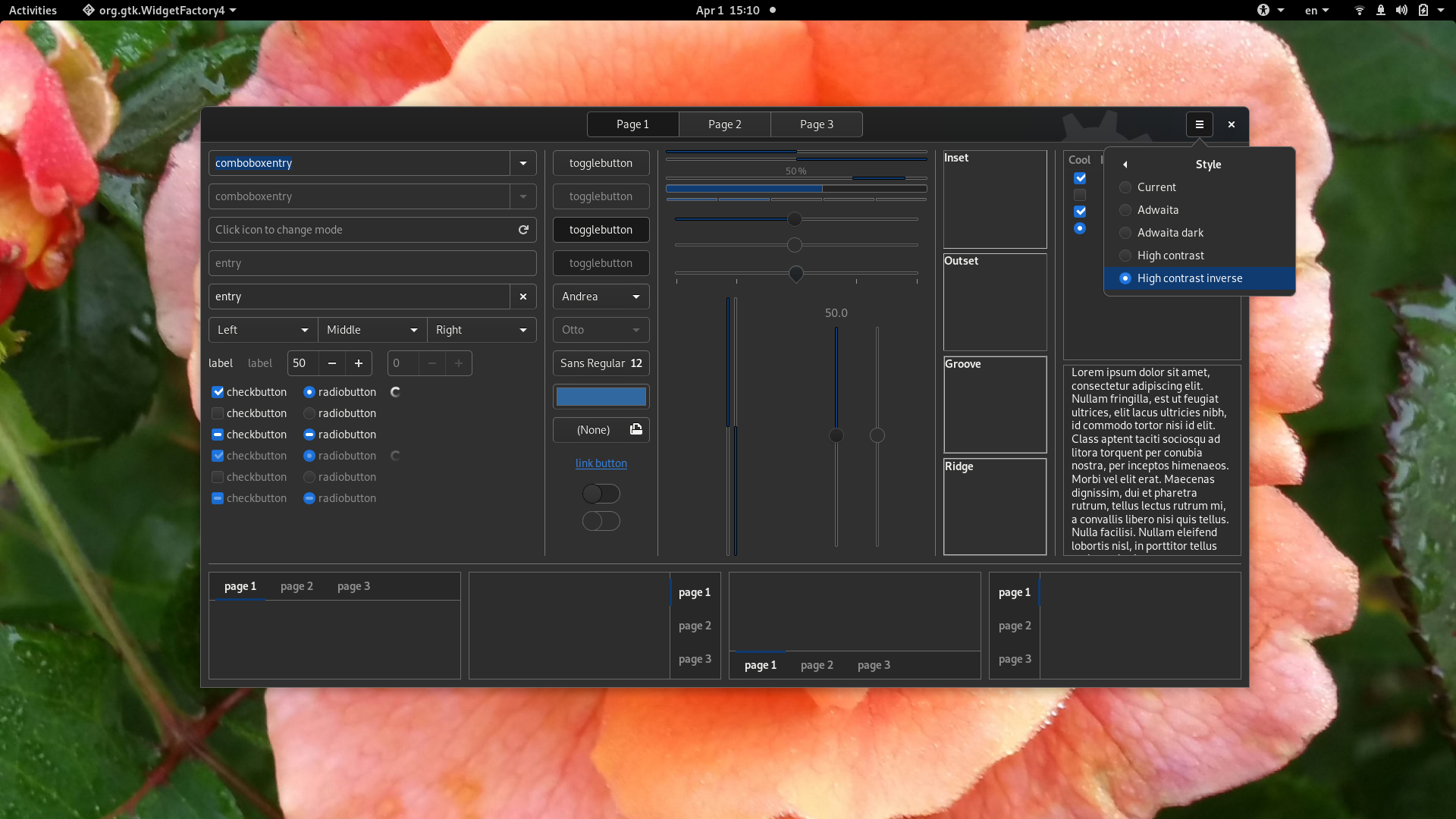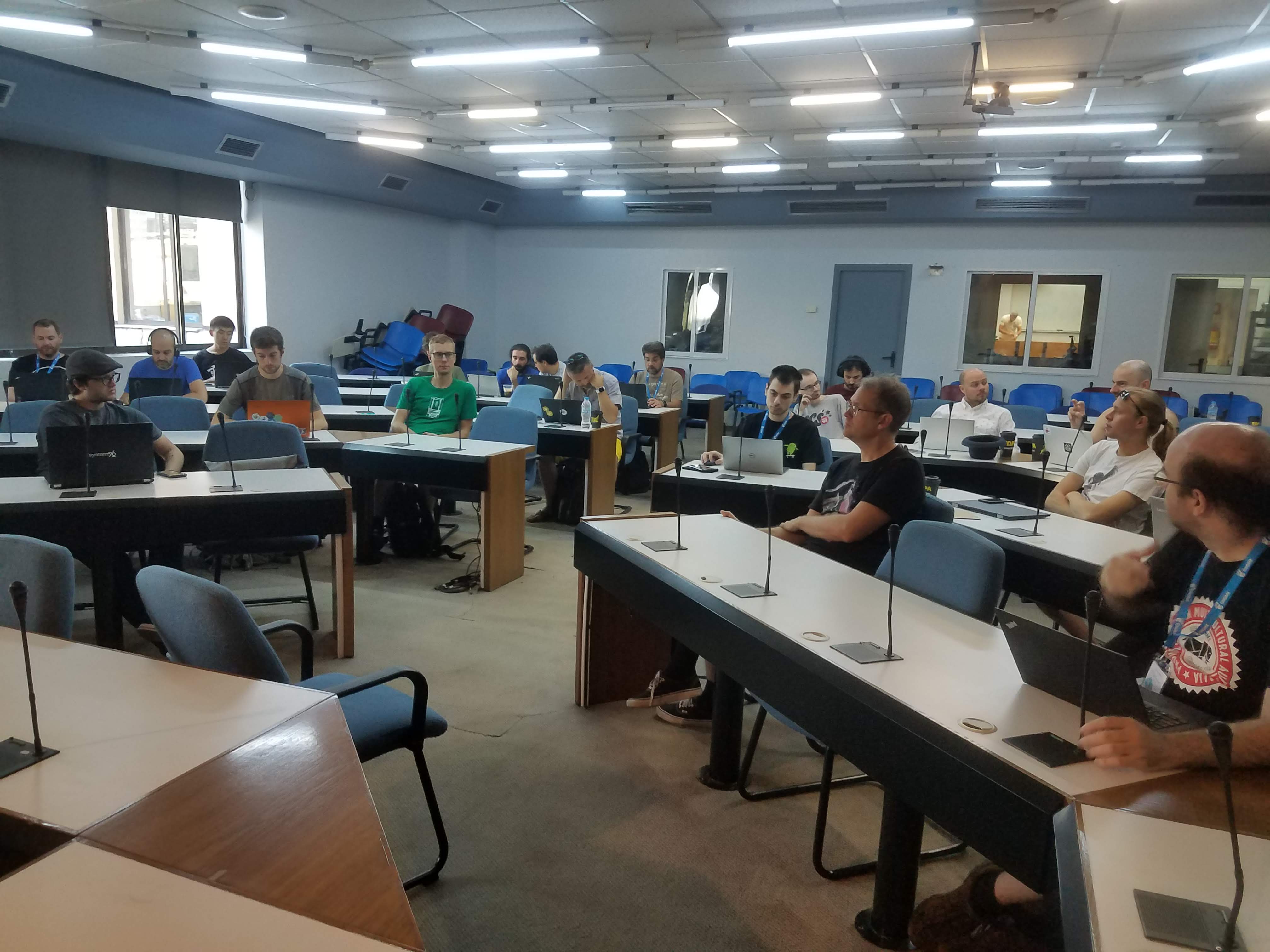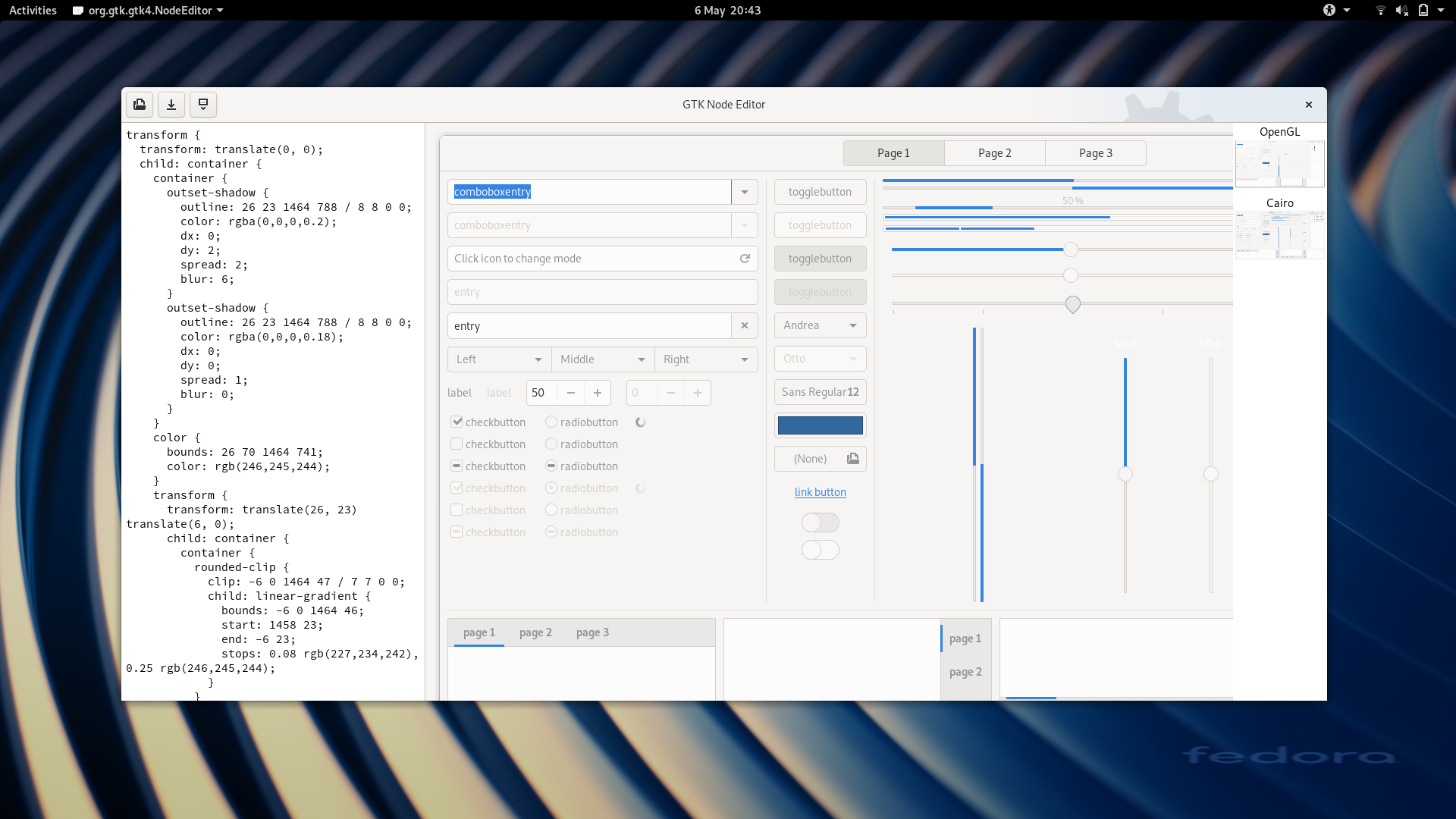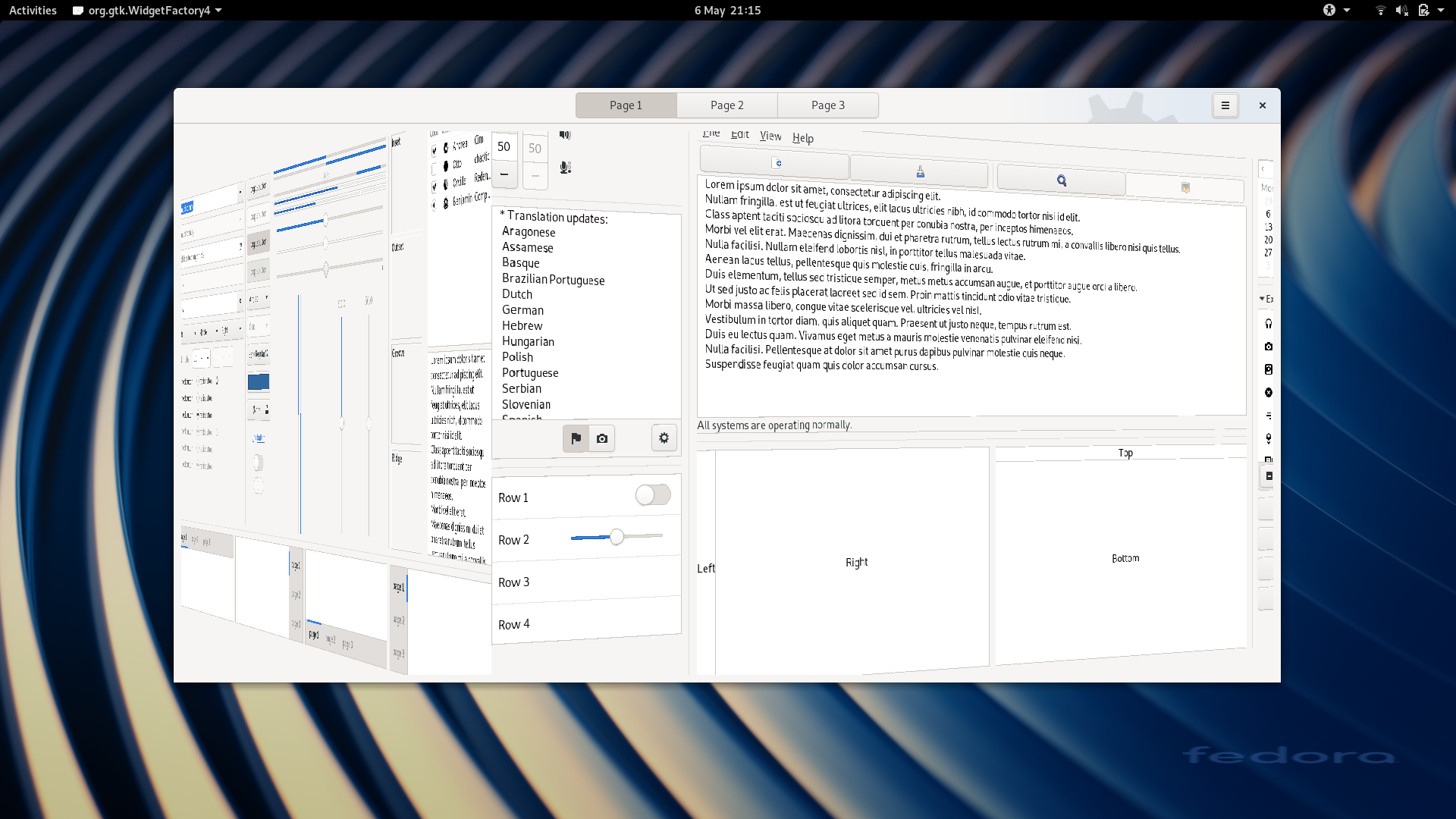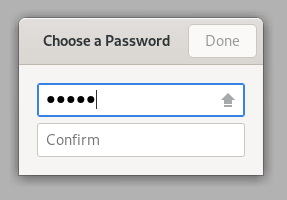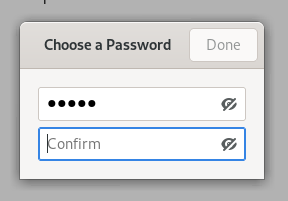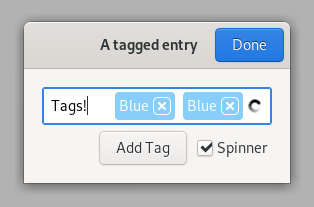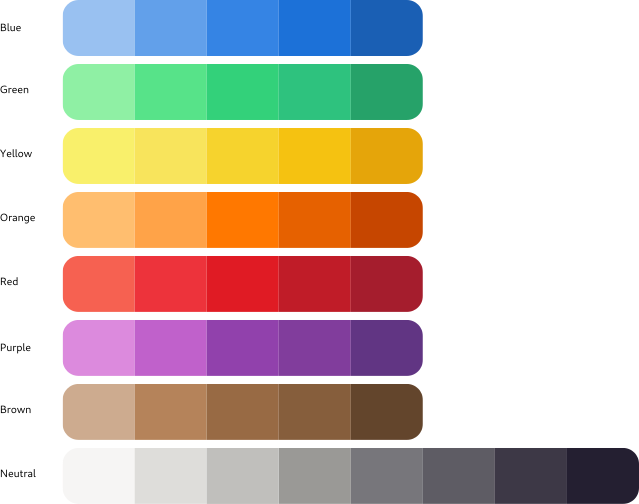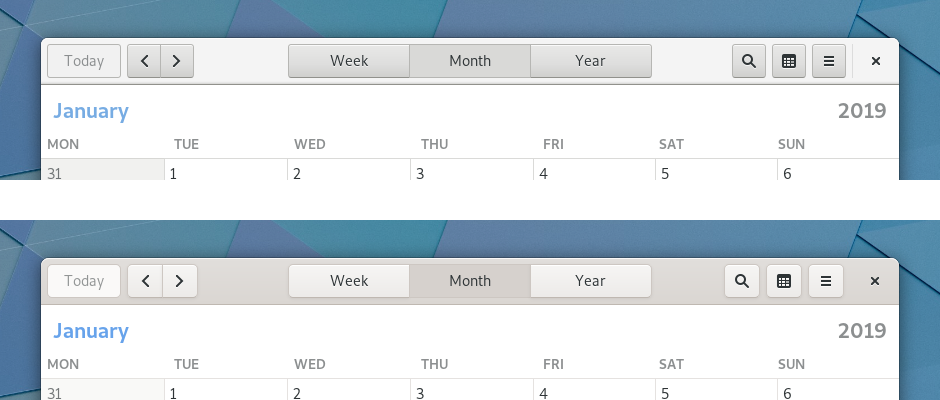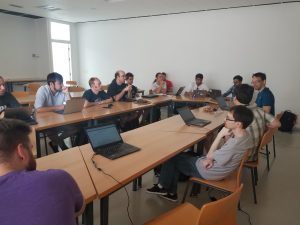The traditional methods for user-initiated data transfers between desktop apps are the clipboard or Drag-and-Drop. GTK+ has supported these methods since the beginning of time, but up until GTK3, the APIs we had for this kind of data transfer were thinly disguised copies of the corresponding X11 apis: selections, and properties and atoms. This is not too surprising, since the entire GDK api was modeled on X11. Unfortunately, the implementation includes horrors such as incremental transfers and string format conversions.
For GTK4, we’re leaving these things behind as we are moving things in GDK around to be closer to the Wayland API. Data transfer is one the areas in most urgent need of this modernization. Thankfully, it is almost complete at this point, so it is worth taking a look at what has changed, and how things will work in the future.
Concepts
If the data your application wants to send is not a string, it is probably some object, such as GFile, a GdkTexture, or a GdkRGBA. The app on the receiving side may be not use GTK or GLib, and thus won’t know these types. And even if it does, there’s no way to get the objects from one process to the other in one piece.
At the core, the data transfer works be sending a file descriptor from the source app, and the target app reading a stream of bytes from it. The protocols for clipboard and DND use mime types such as text/uri-list, image/png or application/x-color to identify the format of the byte stream.
Sending an object involves negotiating a data format that both sides support, serializing the object on the source side into a byte stream of that format, transferring the data, and deserializing the object on the target side.
The local case
Before moving on to concrete APIs, it is worth pausing a moment to consider another common case of data transfer: inside a single application. It is quite common to use the same clipboard and DND mechanisms to send data from the one side of the application to the other. Since we are not crossing process boundaries in this case, we can avoid the byte stream and the associated serialization and deserialization overhead, and transfer the data by just passing a reference to the object.
APIs
The objects we’ve alluded to in the previous section are described by GTypes such as G_TYPE_FILE or GDK_TYPE_TEXTURE, while, as mentioned, the data exchange formats in Wayland and X11 protocols are described by mime types.
The first API we have introduced to deal with these types is the GdkContentFormats object. It can contain a list of formats, which may be GTypes or mime types. We use GdkContentFormats objects to describe the formats that an application can offer data in, as well as the formats that an application can receive data it.
You may wonder why we are mixing GTypes and mime types in the same object. The answer is that we want to handle both the cross-process and the local case with the same APIs. And while we need to match mime types for the cross-process case, we need the GTypes for the local case.
Conversion
We still need a way to associate GTypes and mime types that we can convert into each other. This is handled by the GdkContentSerializer and GdkContentDeserializer APIs. These are essentially registries of conversion functions: GdkContentSerializer knows how to convert GTypes into mime types, and GdkContentDeserializer handles the other direction.
GDK has predefined conversions for common types, but the system is extensible using gdk_content_register_serializer and gdk_content_register_deserializer.
Content
Now we know how to describe formats and convert between them, but to put this all together, we still need a convenient api that takes an object on the one side, and provides a bytes stream on the other. For this, we added the GdkContentProvider API.
A GdkContentProvider lets you combine an object with a format description on the input side, and provides an async writer API on the output side that can be connected to the file descriptor that we want to send the data over.
Typical content providers are created like this:
gdk_content_provider_new_for_value (gvalue)
gdk_content_provider_new_for_bytes (gbytes, mimetype)
The GValue that it takes contains both an object and information about its type, so we don’t need extra type information, if we provide the object as a GBytes (essentially a just a bit of memory), we need to provide the type information separately.
The Clipboard
GTK3 has a GtkClipboard object, which provides the implemention for copy/paste operations. Having this object in GTK is not ideal, since it needs different implementations on the platforms that are supported by GTK. Therefore, GTK4 moves the object to GDK, and consequently renames it to GdkClipboard. It has also been ported to the new data transfer apis that are described above. To put data on the clipboard in GTK4, you use one of the ‘set’ apis:
gdk_clipboard_set_content()
gdk_clipboard_set_value()
gdk_clipboard_set_text()
Ultimately, all of these functions end up associating a GdkContentProvider with the clipboard.
To read data from the clipboard in GTK4, you use one of the async ‘read’ apis:
gdk_clipboard_read_async()
gdk_clipboard_read_value_async()
gdk_clipboard_read_text_async()
Drag-and-Drop
The GTK3 Drag-and-Drop api involves listening to a number of signals on GtkWidget, and calling a few special setup functions for drag sources and destinations. It is flexible, but generally considered confusing, and we won’t describe it in detail here.
In GTK4, the Drag-and-Drop api has been reorganized around the concepts of content providers and event controllers. To initiate a Drag-and-Drop operation, you create a GtkDragSource event controller that reacts to drag gestures (you can also start ‘one-off’ Drag-and-Drop operations by just calling gdk_drag_begin yourself), and you give it a GdkContentProvider for the data that you want to transfer. To receive Drag-and-Drop operations, you create a GtkDropTarget event controller and call an async read method when it emits the ::drop-done signal:
gdk_drop_read_value_async()
gdk_drop_read_text_async()
 This series of posts will look at the major aspects of writing a widget, and how they changed compared to GTK 3. The articles will provide a high-level overview; for a detailed checklist for porting an application to GTK 4, look at the migration guide.
This series of posts will look at the major aspects of writing a widget, and how they changed compared to GTK 3. The articles will provide a high-level overview; for a detailed checklist for porting an application to GTK 4, look at the migration guide.
